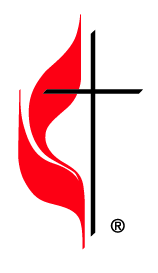Safe Sanctuaries: Not a One and Done

In my work with local congregations around Safe Sanctuaries or other child abuse prevention programs, it seems that everyone is in agreement and most are in compliance with creating a policy for their ministry setting as adopted in The General Conference of the United Methodist Church, in April of 1996. Part of that policy requires a cycle of re-training and a new background check on a specific time cycle. The policy also usually addresses lapse in service and how far the checks most go back in the individual’s history. Most congregations also comply with the requirement of initial training as a part of the clearance for their staff and volunteers to work with children, youth and vulnerable adults. The minimum standard that is over-looked or sometimes just left out is the need for ANNUAL training around your church’s or ministry’s policy. The standard asks for TRAINING, not that you just merely hand out the policy to staff each year. I find this is best accomplished at the beginning of your ministry season with young people. For me, it is each summer during staff training. For others, it is the fall when the new year of Sunday school kicks off. For some, it’s the spring before VIM and mission trips commence. However, more often I get the “Why do we have to do this?” or “It’s hard enough getting everyone initially trained, but REALLY yearly?” Yes, REALLY and here’s why:
· Annual review and training gives you the opportunity to review your policy and revise as you receive feedback of how the policy applied to your ministry settings is working. What were the challenges in implementation? New ministries to be considered? Ministries that no longer exist that your policy addresses?
· You are able to reinforce your minimum standards. It is always amazing to me some of the “basics” that staff forget from year to year. Often, new staff are given an orientation by another staff member; it’s a great opportunity to make sure everyone understands your policy and how it applies to your ministry.
· Did you have an incident? This is the opportunity to review your paperwork, reporting, how it was handled and what risk management action should be taken in the future (removal, addition or adaption of programs or procedures to avoid future incidents). This isn’t always a reportable case of child abuse; it can be around logistics, supervision or non-compliance for example. If you had a case or incident where abuse was reported, it is the time to see how well your crisis plan worked when implemented, and if the chain of command and roles and responsibilities met the needs that were presented during the crisis.
· This time of training allows you to review the “how to” in reporting. What information is needed, the chain of command and communication protocol. Many staff and volunteers never have to make a formal report. This is an important reminder and allows you to give up-to-date information on the reporting process and the chain of command.
· Finally, an annual training serves as a reminder of the expectation of accountability. You should always record the topics in training and who attended. Each individual should sign that they indeed participated in the training. This helps avoid a situation of “Oh I forgot, I didn’t remember that was the rule, I had that training years ago.”…
Child abuse prevention with its minimum standards of practice, policy development, implementation and revision as well as training, can seem overwhelming. But you really can’t afford NOT to DO IT and do it well. As I always say, “It’s all good until it’s not, and when it’s not, it’s REALLY not good!”


